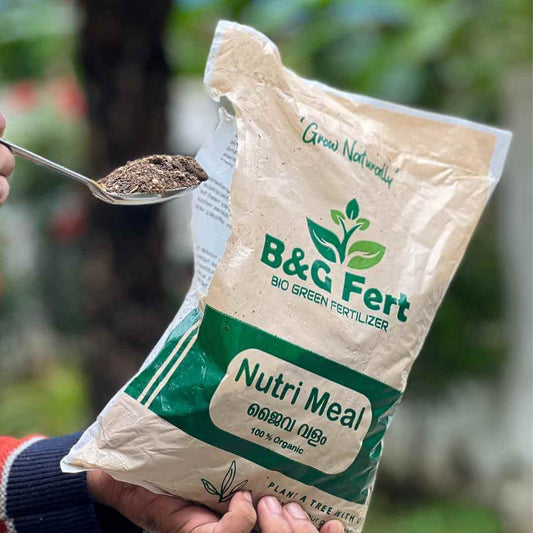
10 Essential Tips for Eco-Friendly Gardening: Sustainable Practices for a Greener Garden
Introduction: Embracing Sustainability in Your Garden
Creating an eco-friendly garden isn't just about aesthetics—it's about nurturing a harmonious ecosystem where plants thrive naturally and sustainably. By adopting these essential tips for eco-friendly gardening, you can minimize environmental impact, conserve resources, and promote biodiversity. Explore these sustainable practices that will help you cultivate a greener, more eco-conscious garden.
1. Water Conservation Techniques
Tip: Install drip irrigation systems or soaker hoses to deliver water directly to plant roots, minimizing evaporation and water waste. Collect rainwater in barrels and use it to irrigate your garden during dry periods. Conserving water not only saves resources but also supports healthier plant growth.
2. Native Plants and Pollinator Gardens
Tip: Choose native plant species adapted to your region's climate and soil conditions. These plants require less water and maintenance while providing habitat and food for local wildlife, including essential pollinators like bees and butterflies. Creating a pollinator-friendly garden enhances biodiversity and ecosystem health.
3. Organic Pest Control Methods
Tip: Use companion planting, beneficial insects like ladybugs and praying mantises, and homemade organic sprays (e.g., neem oil) to control pests naturally without harmful chemicals. This approach protects beneficial insects and maintains ecological balance in your garden, promoting a healthy environment for plants and wildlife alike.
4. Composting for Soil Health
Tip: Start a compost pile or bin using kitchen scraps, yard waste, and plant trimmings. Compost enriches soil fertility, improves structure, and reduces the need for synthetic fertilizers, closing the nutrient loop sustainably. Healthy soil nurtures robust plant growth and enhances garden resilience.
5. Mulching for Weed Suppression and Moisture Retention
Tip: Apply organic mulch (e.g., wood chips, straw, leaves) around plants to suppress weeds, retain soil moisture, and regulate soil temperature. Mulching also enriches soil as it decomposes, supporting nutrient uptake and reducing the need for watering and weeding.
6. Sustainable Garden Design and Materials
Tip: Opt for recycled materials for garden beds, paths, and structures. Use natural stones, reclaimed wood, or recycled plastic lumber to reduce environmental impact and enhance garden aesthetics. Sustainable garden design integrates functionality with eco-conscious choices for long-term sustainability.
7. Energy Efficiency in Garden Maintenance
Tip: Use hand tools or electric-powered equipment instead of gas-powered ones to reduce emissions and noise pollution. Solar-powered garden lights and energy-efficient timers for irrigation systems also contribute to energy conservation, minimizing your carbon footprint while maintaining garden efficiency.
8. Rainwater Harvesting Systems
Tip: Install rain barrels or cisterns to capture rainwater from roofs for garden irrigation. Rainwater is naturally soft and free from chlorine and other chemicals, making it ideal for plants. Harvesting rainwater conserves municipal water supplies and reduces stormwater runoff, benefiting both your garden and the environment.
9. Integrated Pest Management (IPM) Strategies
Tip: Implement IPM techniques by monitoring pests, using cultural practices like crop rotation, and employing biological controls such as beneficial nematodes. IPM reduces reliance on pesticides, preserves beneficial insects, and supports a balanced ecosystem within your garden.
10. Education and Community Engagement
Tip: Share your knowledge and experiences with eco-friendly gardening practices with friends, family, and your community. Join local gardening clubs, participate in community gardens, and advocate for sustainable gardening initiatives. Education and engagement promote broader awareness and adoption of eco-friendly practices for collective environmental benefit.
Conclusion: Cultivating a Greener Future Through Eco-Friendly Gardening
By implementing these 10 essential tips for eco-friendly gardening, you contribute to a sustainable and thriving garden ecosystem. From conserving water and enhancing biodiversity to reducing chemical use and promoting soil health, each practice plays a vital role in creating a greener future. Embrace eco-friendly gardening and enjoy the rewards of a healthier garden while making a positive impact on the planet.
Creating an eco-friendly garden isn't just about aesthetics—it's about nurturing a harmonious ecosystem where plants thrive naturally and sustainably. By adopting these essential tips for eco-friendly gardening, you can minimize environmental impact, conserve resources, and promote biodiversity. Explore these sustainable practices that will help you cultivate a greener, more eco-conscious garden.
1. Water Conservation Techniques
Tip: Install drip irrigation systems or soaker hoses to deliver water directly to plant roots, minimizing evaporation and water waste. Collect rainwater in barrels and use it to irrigate your garden during dry periods. Conserving water not only saves resources but also supports healthier plant growth.
2. Native Plants and Pollinator Gardens
Tip: Choose native plant species adapted to your region's climate and soil conditions. These plants require less water and maintenance while providing habitat and food for local wildlife, including essential pollinators like bees and butterflies. Creating a pollinator-friendly garden enhances biodiversity and ecosystem health.
3. Organic Pest Control Methods
Tip: Use companion planting, beneficial insects like ladybugs and praying mantises, and homemade organic sprays (e.g., neem oil) to control pests naturally without harmful chemicals. This approach protects beneficial insects and maintains ecological balance in your garden, promoting a healthy environment for plants and wildlife alike.
4. Composting for Soil Health
Tip: Start a compost pile or bin using kitchen scraps, yard waste, and plant trimmings. Compost enriches soil fertility, improves structure, and reduces the need for synthetic fertilizers, closing the nutrient loop sustainably. Healthy soil nurtures robust plant growth and enhances garden resilience.
5. Mulching for Weed Suppression and Moisture Retention
Tip: Apply organic mulch (e.g., wood chips, straw, leaves) around plants to suppress weeds, retain soil moisture, and regulate soil temperature. Mulching also enriches soil as it decomposes, supporting nutrient uptake and reducing the need for watering and weeding.
6. Sustainable Garden Design and Materials
Tip: Opt for recycled materials for garden beds, paths, and structures. Use natural stones, reclaimed wood, or recycled plastic lumber to reduce environmental impact and enhance garden aesthetics. Sustainable garden design integrates functionality with eco-conscious choices for long-term sustainability.
7. Energy Efficiency in Garden Maintenance
Tip: Use hand tools or electric-powered equipment instead of gas-powered ones to reduce emissions and noise pollution. Solar-powered garden lights and energy-efficient timers for irrigation systems also contribute to energy conservation, minimizing your carbon footprint while maintaining garden efficiency.
8. Rainwater Harvesting Systems
Tip: Install rain barrels or cisterns to capture rainwater from roofs for garden irrigation. Rainwater is naturally soft and free from chlorine and other chemicals, making it ideal for plants. Harvesting rainwater conserves municipal water supplies and reduces stormwater runoff, benefiting both your garden and the environment.
9. Integrated Pest Management (IPM) Strategies
Tip: Implement IPM techniques by monitoring pests, using cultural practices like crop rotation, and employing biological controls such as beneficial nematodes. IPM reduces reliance on pesticides, preserves beneficial insects, and supports a balanced ecosystem within your garden.
10. Education and Community Engagement
Tip: Share your knowledge and experiences with eco-friendly gardening practices with friends, family, and your community. Join local gardening clubs, participate in community gardens, and advocate for sustainable gardening initiatives. Education and engagement promote broader awareness and adoption of eco-friendly practices for collective environmental benefit.
Conclusion: Cultivating a Greener Future Through Eco-Friendly Gardening
By implementing these 10 essential tips for eco-friendly gardening, you contribute to a sustainable and thriving garden ecosystem. From conserving water and enhancing biodiversity to reducing chemical use and promoting soil health, each practice plays a vital role in creating a greener future. Embrace eco-friendly gardening and enjoy the rewards of a healthier garden while making a positive impact on the planet.













